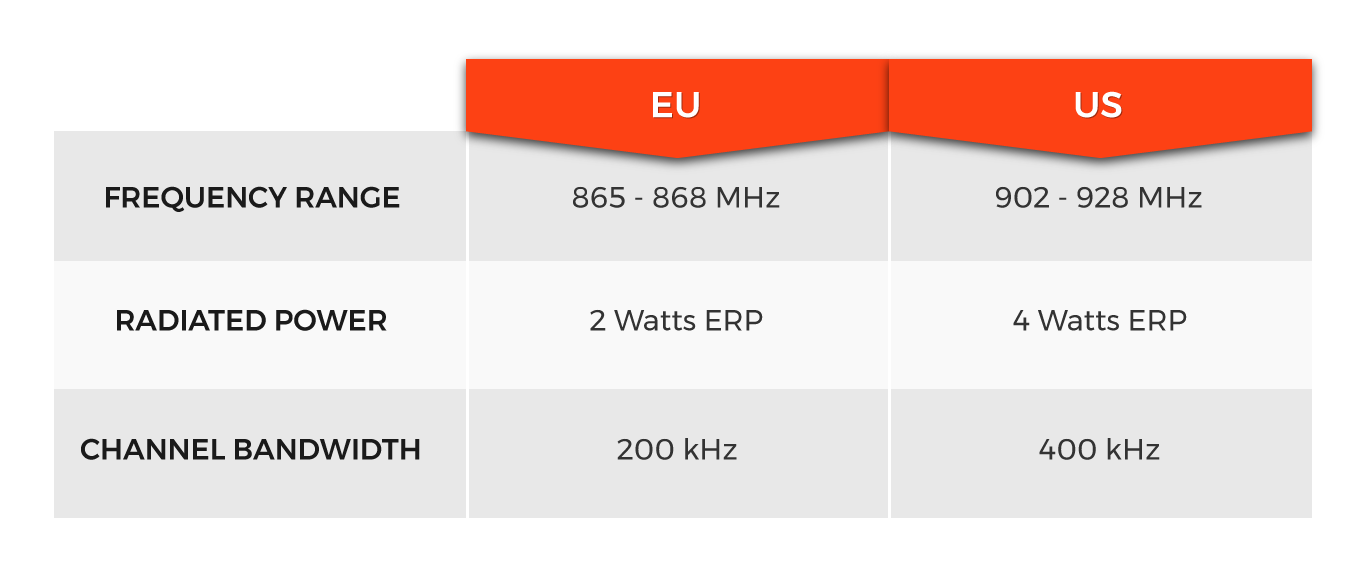What is Frequency Hopping?
Background for Frequency Hopping
There are many issues that can arise during the testing phase of an RFID system. One of the most common issues people face is called reader collision. Reader collision occurs when two readers transmit the same frequency at the same time, causing interference in one another’s read zones. RFID readers utilize “Dense Reader Mode” to coordinate with other readers so no two readers interfere with each other. Dense Reader Mode uses a technique known as “Frequency Hopping” in order to achieve this. This is extremely useful for environments that have multiple readers located closely within a facility.
How Does Frequency Hopping Work?
Frequency Hopping Spread Spectrum (FHSS) is a method used to rapidly switch transmitting radio signals among several frequency channels.
The FCC has certain regulations in place with which RFID readers must comply in order to transmit 1 W of output power. The FCC allows high output power if the system:
- Uses FHSS
- Supports hopping across 50 channels (500 kHz wide) between the operating frequencies of 902 - 928 MHz
- Transmits no longer than 0.4 seconds per channel
Frequency hopping is a technique mainly used to keep two or more RFID readers from interfering with each other while reading RFID tags in the same area. Each reader initiates its operating program, and, once it receives a frequency hop trigger signal, a frequency hopping sequence is then selected from the available operating frequencies. The reader then prompts the RF module to switch to a frequency channel described in the hopping sequence and stays there for 0.4 seconds. Once completed, the reader will stop transmitting and store the channel it was using. The reader will then continue to use the same sequence if a new trigger signal arrives in less than 30 seconds. Because of this rapid hopping among various frequencies, multiple readers and tags are allowed to communicate with one another with minimal, if any, reader collision.
The nature of this technique allows for very minimal interference since the probability of two readers transmitting at the exact same frequency is very low. This comes in handy when using multiple readers that have overlapping read zones. The technique can be better illustrated in Figure 1 shown below, where three readers are able to transmit signals within a certain range of frequencies without any reader collision.
What is Frequency Hopping Used For?
Frequency hopping is a technique used in wireless communication to improve security, reduce interference, and enhance signal reliability. By rapidly switching a signal’s carrier frequency among many frequency channels in a predetermined sequence, frequency hopping makes it much harder for unauthorized listeners to intercept or jam the transmission. This method is widely used in technologies like Bluetooth, military radios, and some Wi-Fi systems, where maintaining a stable connection in crowded or potentially hostile environments is critical. Overall, frequency hopping helps ensure clearer communication and protects data from interference and eavesdropping.
For businesses, this translates to improved data security, reduced downtime, and better performance for wireless tools and devices critical to daily operations.
Conclusion
For more information on Frequency Hopping or RFID in general - comment below or contact us!
If you would like to learn more about all things RFID, check out our website or our YouTube channel.
To read more about RFID frequencies, check out the links below!
Sources:
1 Texas Instruments Application Report 2015. Asynchronous Channel Hopping for FCC 15.247 Compliance. http://www.ti.com/lit/an/swra482/swra482.pdf


